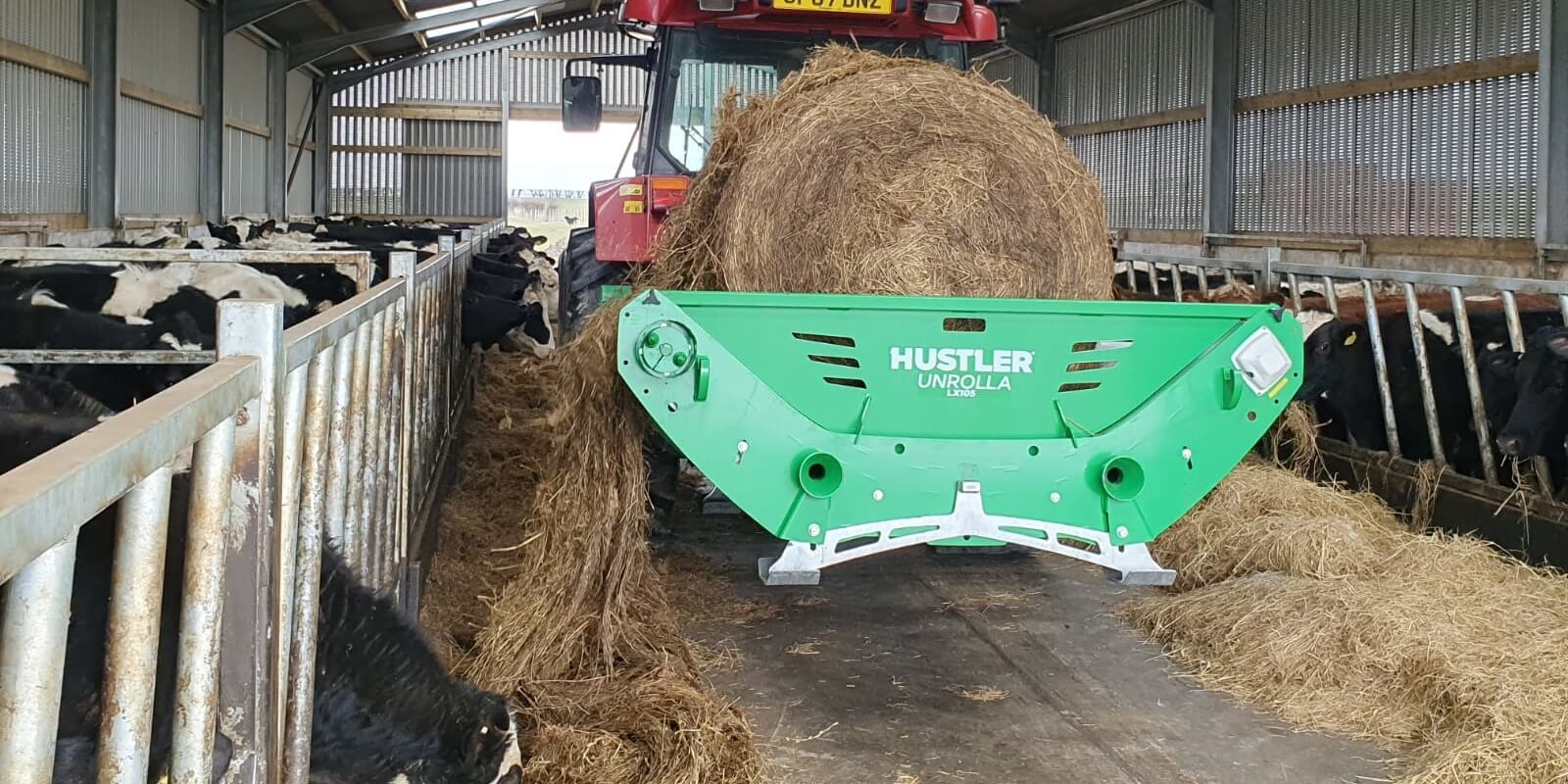Why should I mechanise my feeding system?
Why should I mechanise my feeding system? This is one of the main questions which comes up every time farmers see new equipment on-line or are presented with a shiny new machinery brochure.
And it is a fair one too!
Families have been farming for generations, using the same methods and getting on fine, so why change it?
Well, at Hustler we understand how important the feeding system is on your farm. Making sure you have the right quality feed, fed at the right time and in the right quantities, is fundamental to the profitability of the farm. This is true for all types of livestock farms, whether you are looking for animal weight gains or litres of milk – a healthy, well-fed animal will do better. Feed will also be one of your big costs, so let’s see how mechanising can help.

Firstly, let us look at the time involved in feeding.
If you are feeding by hand, that is spreading a bale out by hand against a feed fence, it could take up to 30 minutes and it’s hard work. It is a good ‘keep-fit program’ but fatigue and injuries are always near at hand. If you were to use a tractor-mounted bale-feeder it would take about 7 minutes, including loading the bale and removing the net wrap.
This gives you a time saving where you could be doing more profitable work, and also allows you use a specific amount of feed.
Feed which has been un-wound with a bale feeder tends to be more open and fluffier, meaning the animals take less time to get their fill. This means they can move away from the feed fence sooner and start ruminating.
If you use ring feeders, there are wins in this situation too. By unwinding the bale into the ring feeder, the feed will be loosened up and much easier for the animals to get at it. You can also feed part bales.
This brings us to the second major point, how efficiently the feed is used.
There is a tendency to dump a big amount of feed and let them ‘get on with it’. This saves us labour but does not actually give the animals the best use of the feed. Often the bottom of the feed is going off before they eat it, especially in a very tight and full ring feeder. Mechanical feeding is quick and easy, so you can afford to do it more often and the animals will always have fresh feed.
We have had farmers commenting on better condition animals using less feed – where they increased the frequency of feed and reduced the total amount fed.
In Europe and other parts of the world where livestock is housed indoor for winter, having a bale feeder also opens opportunities for outdoor feeding. Where ground conditions allow, you can keep cattle outside for longer even when there is no grass. Supplementary outdoor feeding can easily be done with a tractor. The feed can be laid out in a long line so that the animals are spread out. This means less field damage, less competition for feed, and the manure is distributed across a bigger area rather than in a concentrated area around a feed ring.
A farmer commented to me recently that he had a much better overall sale value on his lambs this year. He reckons it was because the average weight of the lambs was more consistent, and this came from feeding with a bale feeder rather than ring feeders. Weaker animals were able to get equal access to feed.

There is also a discussion about the right length for the feed, with many opinions about it.
Generally, it is felt that a longer length is better as it stays in the animal longer, giving more time for rumination and allowing more nutrients to be absorbed. Often straw is fed to increase roughage when the animals are ‘fired-up’ from feeding on short silage. A similar advantage can be had by feeding the silage in a longer length.
Often extra knives are added to the baler so that the baled silage is easier to spread out by hand. If you were to feed this with a bale feeder, there is no need to chop the silage. And the bales will keep their shape better during storage.
If you want to learn more, my colleague Lance Paskewitz wrote an article about the benefits of feeding long-stem hay, especially when weaning calves that you can read here.
Obviously, you will need a tractor or telehandler to operate a bale feeder and might be thinking about the cost of this. Thinking it through, there should not be much extra cost, as you would be using a machine to fetch the bale from the stack and bring it to the feed place anyway. Our machines are hydraulically driven and only need a minimum oil flow, usually, a tractor at idle is enough to power them. So the few minutes extra on the tractor to feed the bale shouldn’t add to your costs.
Here at Hustler, we are so confident about the products, that we guarantee 100% satisfaction – that’s our commitment to you, we will see you right, and if you’re not completely happy within 30 days, you can take up our money-back guarantee.


























